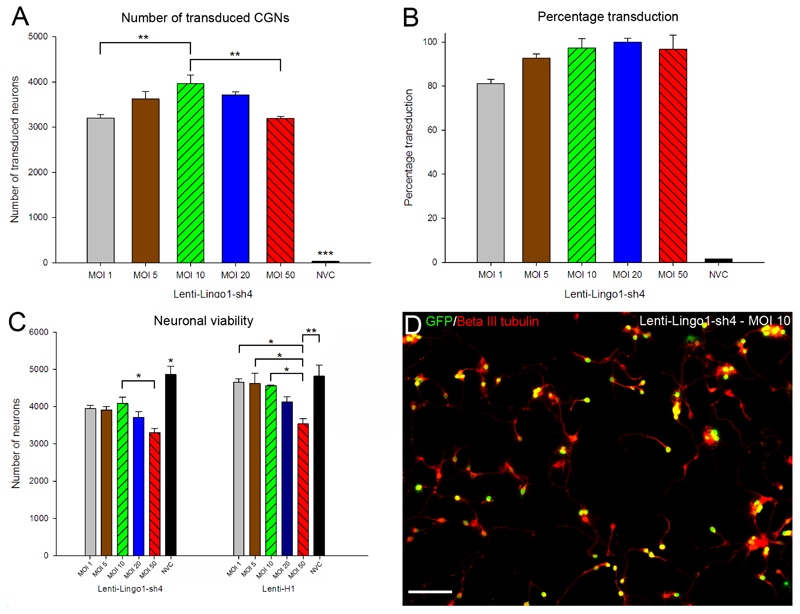Figure 2.
CGNs are efficiently transduced in vitro, although viability was affected by shRNAs and viral concentration. (A) Quantification of the mean number of transduced CGNs using Lenti-LINGO1-sh4. The number of eGFP positive CGNs was counted and the mean number of transduced CGNs plotted for each MOI. There were significantly more CGNs transduced using an MOI 10 compared to MOI 1 or 50 (** P < 0.01). Values represent mean and SEM; analysis was performed using one way ANOVA with Tukey post-hoc tests, n = 3. (B) Quantification of the percentage transduction efficiency, which was calculated by dividing the number of transduced CGNs by the total number CGNs multiplied by one hundred. Percentage transduction did not change with viral concentrations higher than MOI 10 where the transduction efficiency was already above 90%. Values represent mean and SEM, n = 3. (C) Quantification of the mean number of CGNs after transduction with Lenti-LINGO1-sh4 or Lenti-H1. The number of CGNs was counted and the mean number plotted for each MOI. Neuronal viability was affected by MOI and there was a decrease in neuronal viability at higher viral concentrations. Neuronal viability was also differentially affected by the viral vectors. There were different patterns of neuronal viability between the lentiviral vectors that encoded shRNAs and the viral vectors that did not encode an shRNA. Values represent mean and SEM, analysis was performed using one way ANOVA with Tukey post-hoc tests, n = 3/group. (D) CGNs are efficiently transduced by Lenti LINGO1-sh4 at an MOI of 10. Transduced CGNs expressing eGFP (green) and stained for beta-III tubulin (red) appear yellow. Scale bar: 100 μm.

